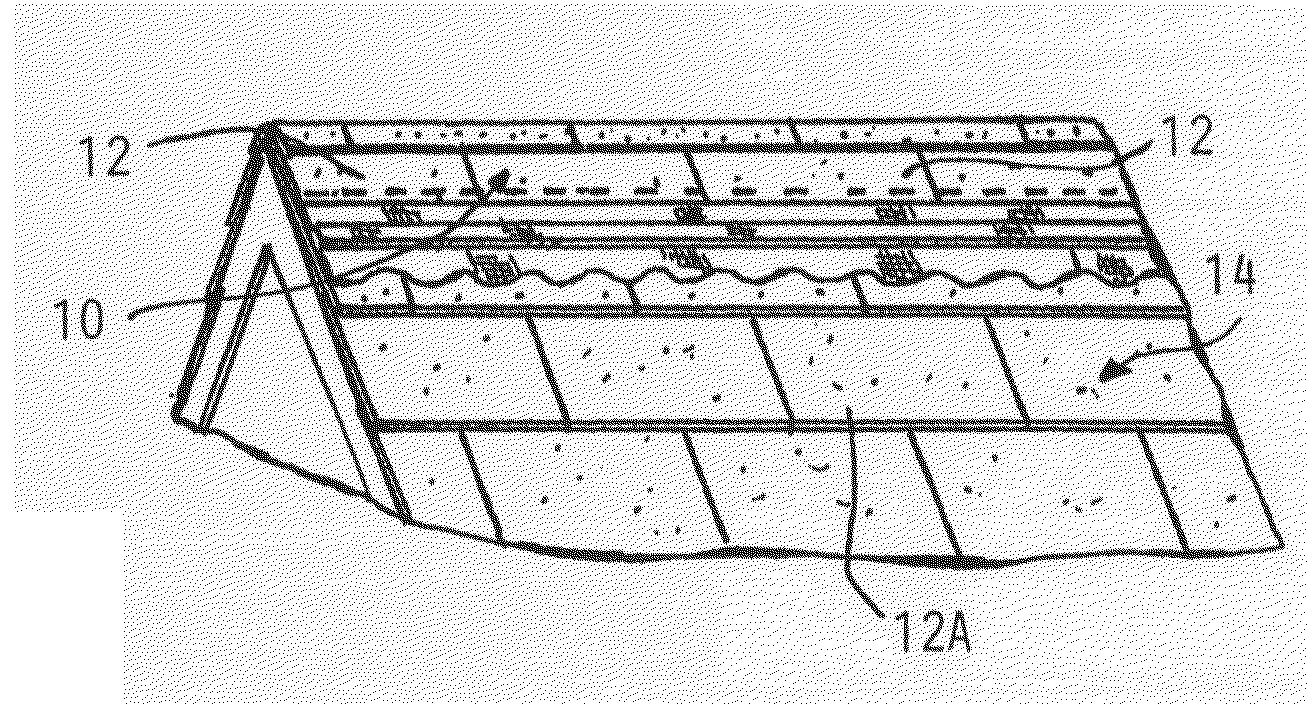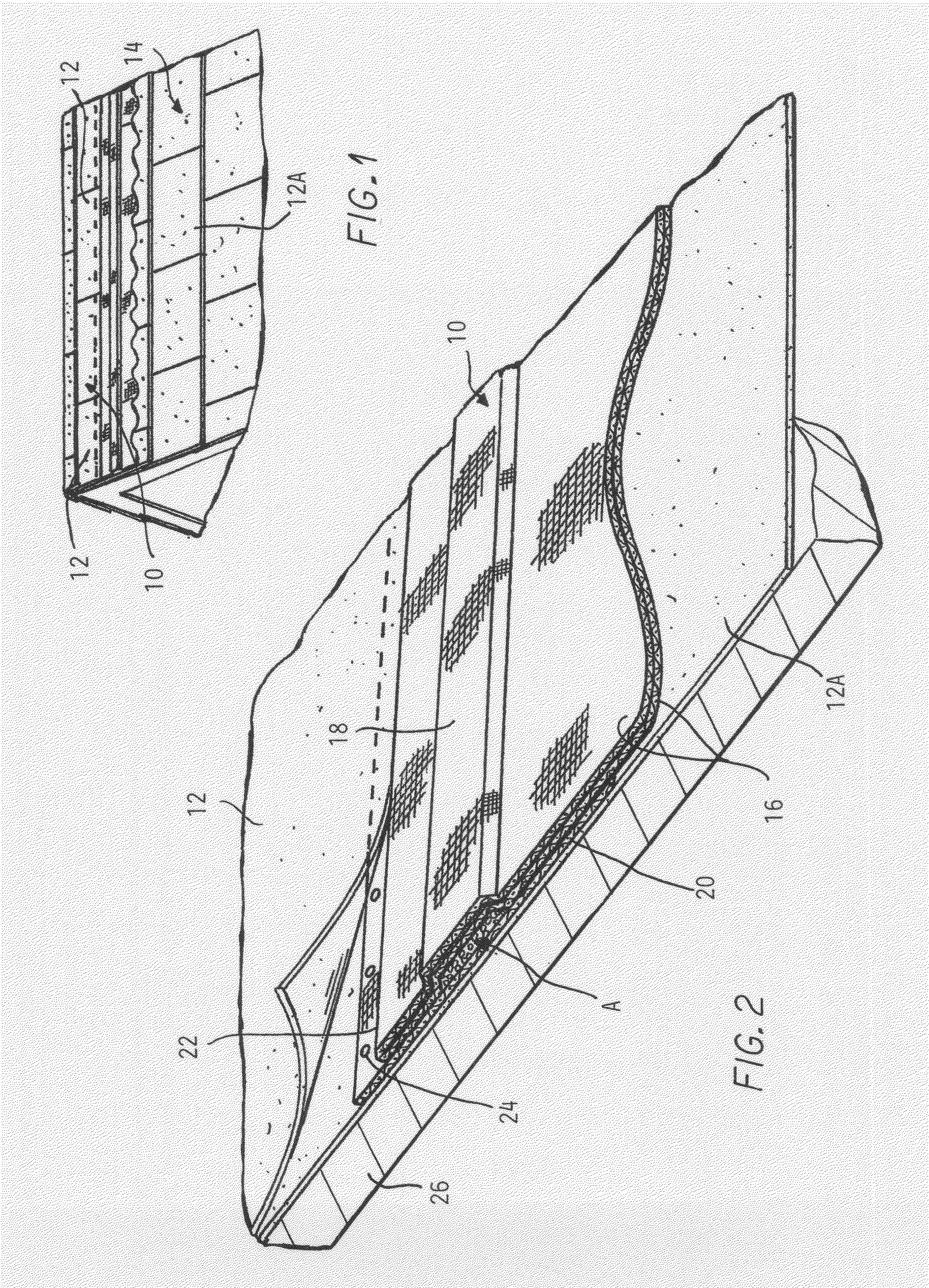Shingle Inserts And Method For Eliminating and Preventing Growth of Algae, Moss, or Lichens on a Roof
a technology of shingle inserts and roofs, applied in roofs, building materials handling, construction, etc., can solve the problems of shortening the service life of roofs, roof shingles can quickly kill algae, moss, or lichen growths,
- Summary
- Abstract
- Description
- Claims
- Application Information
AI Technical Summary
Benefits of technology
Problems solved by technology
Method used
Image
Examples
Embodiment Construction
[0019]In the following detailed description, certain specific terminology will be employed for the sake of clarity and a particular embodiment described in accordance with the requirements of 35 USC 112, but it is to be understood that the same is not intended to be limiting and should not be so construed inasmuch as the invention is capable of taking many forms and variations within the scope of the appended claims.
[0020]Referring to the Drawings, FIG. 1 shows a series of shingle inserts 10 according to the invention, installed on a roof with an upper projecting edge portion nailed beneath a course of shingles 12 near the top of the roof 14, with a main portion overlying the next lower course of shingles 12A.
[0021]One or more additional courses of shingle inserts 10 may be installed in shingle courses at locations down the roof as necessary, but the improved effectiveness of the strips according to the invention minimizes such need.
[0022]FIG. 2 shows additional details of the shing...
PUM
 Login to View More
Login to View More Abstract
Description
Claims
Application Information
 Login to View More
Login to View More - R&D
- Intellectual Property
- Life Sciences
- Materials
- Tech Scout
- Unparalleled Data Quality
- Higher Quality Content
- 60% Fewer Hallucinations
Browse by: Latest US Patents, China's latest patents, Technical Efficacy Thesaurus, Application Domain, Technology Topic, Popular Technical Reports.
© 2025 PatSnap. All rights reserved.Legal|Privacy policy|Modern Slavery Act Transparency Statement|Sitemap|About US| Contact US: help@patsnap.com



